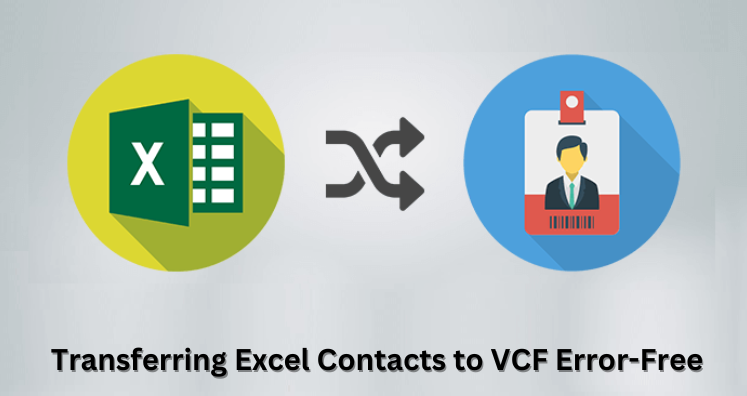Introduction
It is essential that record transitions among formats be seamless in the present day of virtual technology. Making the switch from Excel contacts to a vCard (VCF) layout is one example of this. It is crucial to recognize the significance of this shift and the restrictions it offers as a way to maintain information accessibility and integrity.
Concerning File Format: vCard to Excel Conversion
Contacts are frequently managed and saved using Excel files. But in terms of compatibility and interoperability with diverse systems and gadgets, the vCard (VCF) layout suggests itself to be a regular solution. VCF files are wonderful for sharing and transferring contacts amongst outstanding systems due to the fact that they embody touch information and are compatible with a wide variety of applications.
Reasons for Conversion
The portability and compatibility problems with Excel make the conversion from Excel to vCard crucial. In order to ensure seamless access to touch records within the path of systems, VCF documents offer a standardized format that is simple to import into pretty much all email customers, smartphones, and one-of-a-kind touch management packages.
Solution: The Drawbacks of Manual Methods
Manual conversion techniques require copying and pasting records from an Excel report right into a vCard, which is hard and prone to errors. It may be difficult to maintain formatting and record accuracy during the course of manual conversion, so you can increase the risk of factual loss or corruption.
Automated Excel to vCard Converter Tool
The automatic GainTools Excel to vCard Converter Software gives a reliable answer to conquer the drawbacks of manual conversion. The whole conversion technique is automatic via this software, ensuring particular, powerful, and mistake-unfastened conversions from Excel contacts to the vCard format.
The Excel to vCard Converter Batch Conversion capabilities embody: simultaneously convert numerous Excel contacts to a vCard layout, thereby saving time and effort.
- Maintaining Data Integrity: ensures the super transfer of all touch statistics, which include names, mobile cellphone numbers, addresses, and e-mail addresses.
- Customization Options: Gives you the liberty to pick out which contacts or fields to convert, allowing you to customize the result to fulfill your desires.
- Compatibility: It creates VCF documents with numerous structures and apps and permits a couple of Excel file versions.
- User-Friendly Interface: Users of all potential degrees can, without problem, navigate the conversion in its intuitive format.
- Ensuring the safety and accuracy of personal contact statistics throughout and after the conversion.
How to Use a vCard Converter in Excel
- Install and download: Download the software from the reliable net internet web site, and then study the setup tips.
- Start the software application. On your laptop, release Excel to vCard Converter.
Include Excel Documents: To convert the contacts, pick out the Excel files containing the contacts. - Select the Output Format: For the conversion, select out vCard (VCF) because of the output format.
- Personalize the Settings (if vital): You can adjust the settings to customize the conversion method to your liking.
- Launch the conversion. Begin the conversion machine and deliver it on time.
Converted vCard documents may be accessed by finding and uploading them to this device or tool of your choice.
Related Post: – Choosing the Right Method for XLS File to vCard VCF File Migration
In summary
Transforming Excel contacts into the vCard (VCF) format successfully is important to preserving information accessibility and integrity in several structures and gadgets. For a dependable and powerful answer, keep in mind automatic Excel to vCard Converter Software, as guide techniques is onerous and at risk of mistakes. Users can assure mistakes-lost conversions, preserve facts accuracy, and allow frictionless touch information to get proper access via automation.
